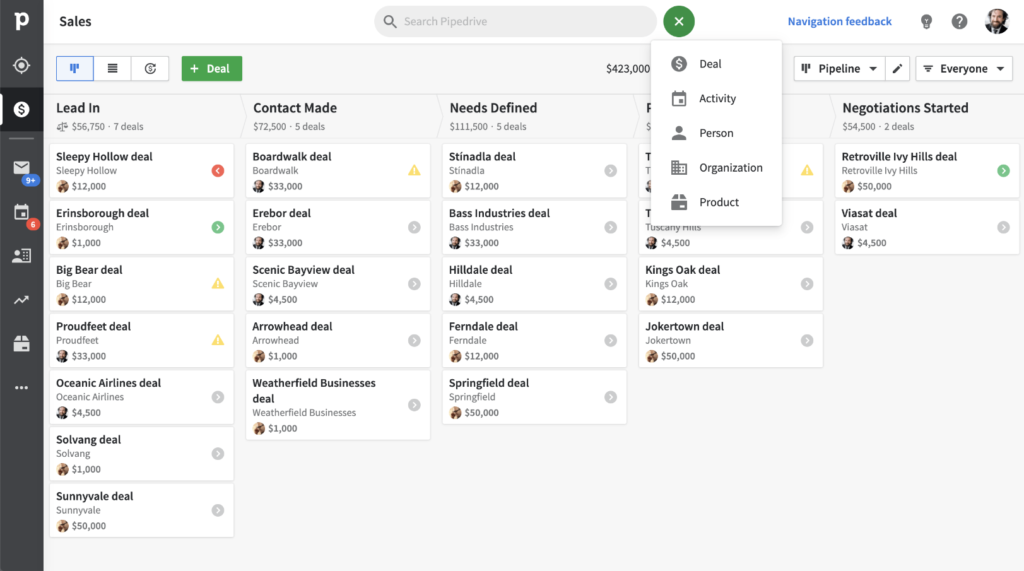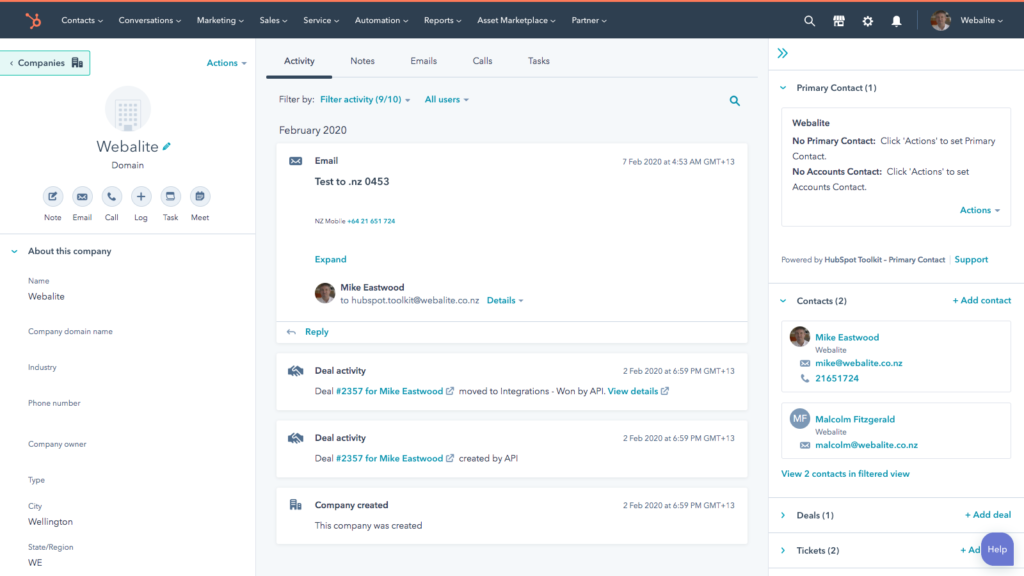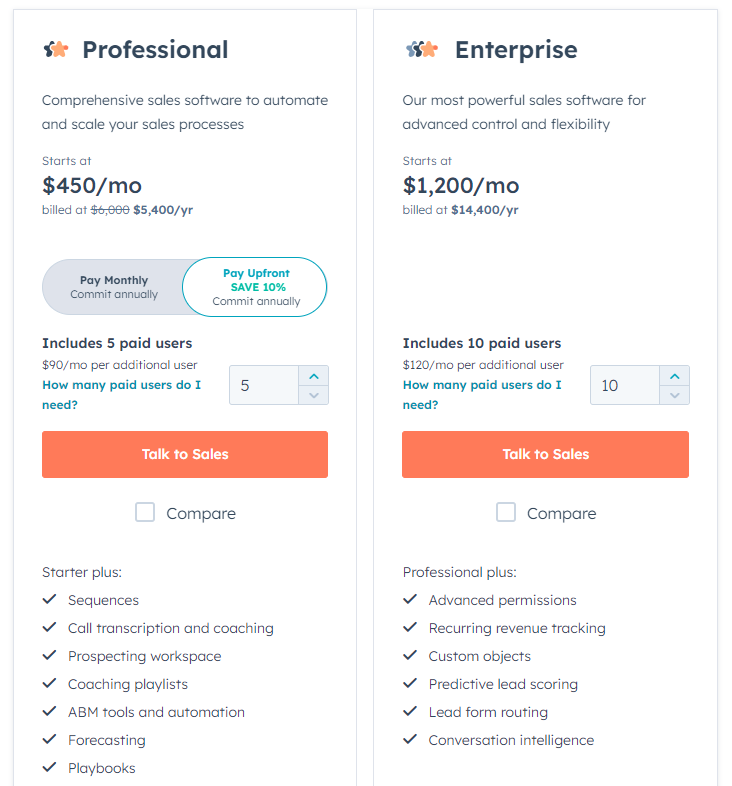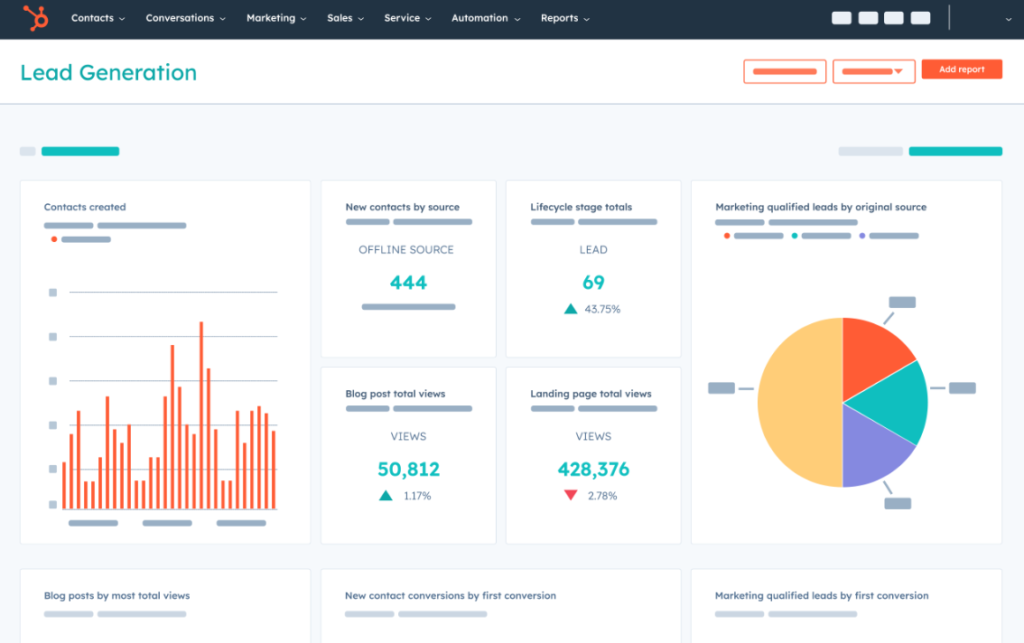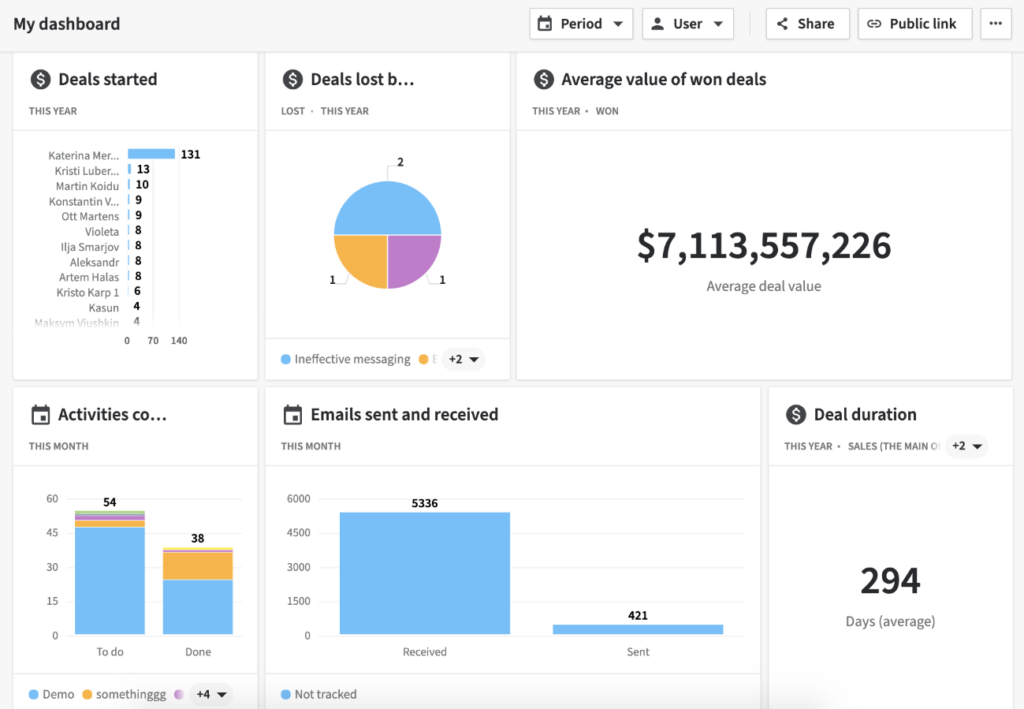In this blog post, we’re diving into the world of Customer Relationship Management (CRM) and comparing two popular options: Pipedrive and HubSpot. It’s more than just features; it’s about finding the CRM that’s tailor-made for YOUR business needs.
So, stay tuned as we dissect the strengths, explore the quirks, and help you make an informed decision that could transform your business.
HubSpot: A CRM Powerhouse
HubSpot is a CRM platform with all the software, integrations, and resources you need to connect marketing, sales, content management, and customer service. Each product in the platform is powerful on its own, but the real magic happens when you use them together.
Pipedrive: Streamlining Sales Pipeline Management
Pipedrive is a cloud-based CRM solution that helps businesses manage their sales pipeline. It uses activity-based selling to streamline the sales process and close deals.
Ease of Use
Pipedrive and HubSpot differ slightly in terms of ease of use, catering to different user preferences. Pipedrive is widely recognized for its straightforward and intuitive design, making it exceptionally user-friendly. The interface is clean and organized, allowing users to easily navigate through their sales pipeline and access vital information without a steep learning curve.
HubSpot, on the other hand, offers a more multifaceted ecosystem that includes marketing, sales, content management, and customer service tools. While HubSpot’s interface is generally user-friendly, it might require a bit more time for users to fully grasp due to the broader scope of functionalities. Both Pipedrive and HubSpot provide onboarding and training resources, ensuring that users can get started smoothly and make the most of their CRM.
Sales Automation
Both Pipedrive and HubSpot excel in providing robust sales automation features. Pipedrive is renowned for its emphasis on activity-based selling, which streamlines the sales process by automating repetitive tasks, reminders, and follow-ups. Users can set up workflows that trigger actions based on specific activities or milestones in the sales cycle.
HubSpot, with its CRM and Sales Hub, offers an extensive suite of automation tools. These include email sequences, lead scoring, and workflow automation that can be seamlessly integrated with other HubSpot components like marketing and customer service. HubSpot’s strength lies in its ability to offer end-to-end automation across the entire customer journey, making it a powerful choice for businesses seeking comprehensive automation solutions.
Customization
Customization is a crucial aspect when choosing a CRM, allowing businesses to tailor the system to their unique needs and processes. Pipedrive offers customization options that enable users to define and customize their sales stages, aligning the CRM with their specific sales workflows. Moreover, Pipedrive provides flexibility in creating custom data fields and tags, allowing businesses to organize and categorize information in a way that suits them best.
HubSpot, on the other hand, offers extensive customization capabilities. Users can adapt sales processes, fields, and reports to precise requirements. HubSpot also empowers users to personalize interactions with leads and customers by creating tailored content and communications, thus enhancing the overall customer experience.
Scalability
Both Pipedrive and HubSpot are designed to accommodate businesses of varying sizes. Pipedrive, as a cloud-based solution, is well-suited for startups and small to medium-sized businesses. It offers scalability through its robust ecosystem of third-party integrations, allowing businesses to expand and adapt their CRM as their needs evolve.
HubSpot, with its comprehensive suite of marketing, sales, and service tools, caters to both small businesses and large enterprises. Its integration ecosystem and flexible architecture make it a scalable choice for businesses looking for a CRM that can grow with them. As businesses expand, HubSpot provides a seamless transition and supports the increased demands of larger operations.
Pricing
When it comes to pricing, Pipedrive offers a cost-effective range of plans, making it an attractive option for businesses with varying budgets. Pipedrive’s plans start as low as $9.90 per month, offering affordability for smaller teams and startups. Their pricing scales with additional features and functionality, with the top-tier plan priced at $59.90 per month. This tiered approach allows businesses to select the plan that best aligns with their specific needs and budget.
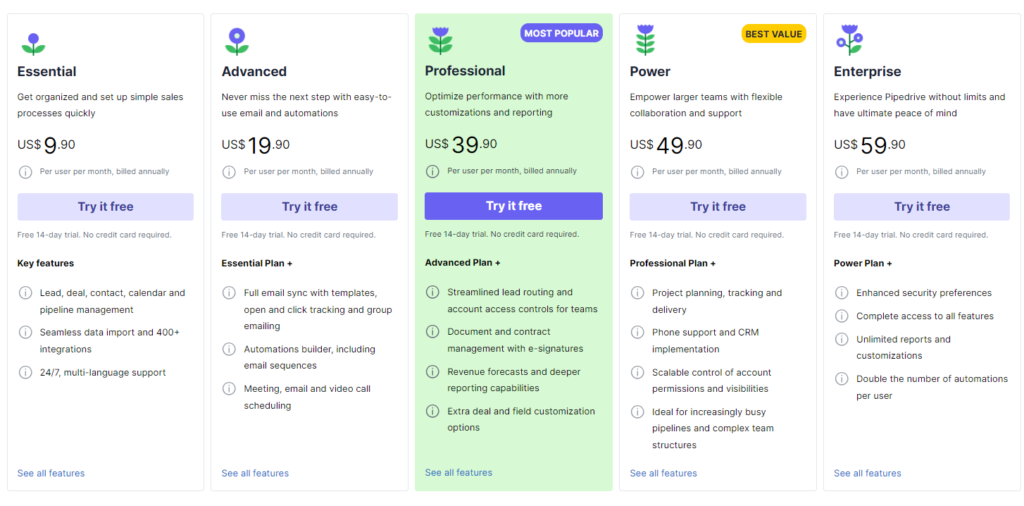
In contrast, HubSpot’s Sales Hub plans are known for their comprehensive features, but they tend to be considerably more expensive. HubSpot’s pricing for Sales Hub starts at $450 per month, making it a higher entry point compared to Pipedrive. The cost can increase significantly, with the top-tier plan reaching up to $1,200 per month. While HubSpot’s pricing reflects the breadth and depth of its offerings, businesses should carefully evaluate their requirements and budget to determine whether the additional cost justifies the enhanced capabilities it provides.
Email Marketing Features
Both HubSpot and Pipedrive offer comprehensive email marketing features to help businesses effectively engage with their leads and customers.
HubSpot provides a robust suite of email marketing tools, including team email collaboration, email scheduling, email tracking and notifications, and email reply tracking. These features enable teams to work seamlessly on email campaigns, send messages at optimal times, and gain insights into email performance and recipient interactions. HubSpot also offers a library of email templates for streamlined content creation and integration with top email solutions like Office 365 and Gmail.
Pipedrive, on the other hand, seamlessly integrates with popular email applications such as Gmail and Outlook across all its plans. While Essentials may have a more streamlined feature set, all other Pipedrive plans offer customizable email templates, merge fields for personalization, group emailing for efficient outreach, email scheduling to optimize delivery times, and click tracking to monitor recipient engagement.
Reporting and Analytics
Reporting and analytics are essential for businesses to gain insights and make data-driven decisions. Here’s how HubSpot and Pipedrive compare in this crucial aspect:
HubSpot offers a robust reporting system that varies depending on your plan. Even on the free plan, users can access up to three dashboards, with each dashboard supporting up to 10 reports. Paid plans take reporting to the next level, offering 10 to 50 dashboards, each accommodating 10 to 30 reports per dashboard. For businesses with more extensive reporting needs, HubSpot’s Professional and Enterprise plans include 100 to 500 custom reports per portal. These plans also provide 1,000 campaign reports for in-depth analysis of marketing efforts. Furthermore, HubSpot offers advanced reporting features such as marketing asset comparison reporting and behavioral event triggers and reporting, allowing businesses to dig deeper into their data for valuable insights.
In contrast, Pipedrive allows users to create custom deal and activity reports. However, the number of reports is limited, ranging from 15 to 150 reports depending on the plan. This limitation could be a consideration for businesses with extensive reporting requirements. Nevertheless, Pipedrive’s Enterprise plan offers a distinct advantage by providing unlimited report generation. This feature makes it an attractive choice for businesses seeking unrestricted reporting capabilities and the ability to create as many custom reports as needed.
Conclusion
Choosing the right CRM is a pivotal decision for your business, and we’ve compared Pipedrive and HubSpot to help you make an informed choice.
Pipedrive offers a user-friendly interface and streamlined sales automation, ideal for efficiency and simplicity.
HubSpot provides an extensive ecosystem, seamlessly connecting marketing, sales, content management, and customer service. It excels in advanced automation and customization.
Ultimately, your choice between Pipedrive and HubSpot hinges on your specific needs and budget. Take your time to evaluate these options; your CRM can be a game-changer for your business. Thank you for joining us today!


